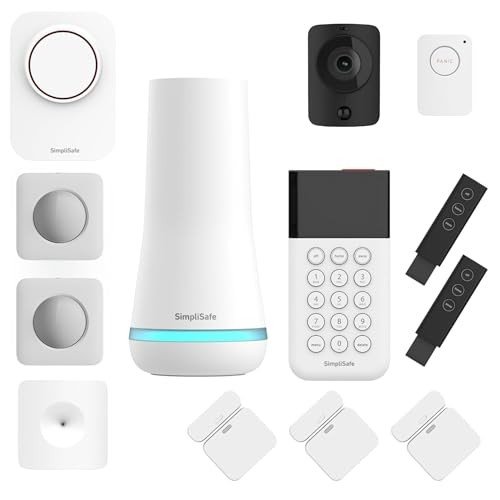11 Ways To Completely Sabotage Your Traditional Lighting UK
Traditional Lighting in the UK: A Comprehensive Overview
Traditional lighting holds a treasured place in the homes and public areas of the United Kingdom. With its capability to evoke nostalgia, appeal, and heat, traditional lighting fixtures use not only aesthetic appeal but also practical value. This short article explores the numerous kinds of traditional lighting typical in the UK, their history and evolution, popular designs, and how to incorporate them into modern design.
A Historical Perspective on Traditional Lighting
The evolution of lighting in the UK has actually been comprehensive. From the flickering flames of candles and oil lamps to the advent of gas and electric lights, the journey is as interesting as it is informing.
Key Milestones in Lighting History:
- Candles (Before 1800s): The earliest form of artificial light, utilizing tallow or beeswax.
- Oil Lamps (Late 18th Century): These became popular in homes and theaters, offering brighter illumination than candles.
- Gas Lighting (Early 19th Century): Revolutionized public and street lighting before electricity took precedence.
- Electric Lighting (Late 19th Century): Marked the shift to modernity, with incandescent bulbs gradually replacing older kinds.
Each of these developments paved the method for traditional lighting, which still integrates ancient techniques into contemporary designs.
Kinds Of Traditional Lighting
Traditional lighting can be categorized into numerous distinctive types, each with its unique characteristics.
1. Chandeliers
Chandeliers are often the centerpiece of a room. They can be found in various styles, from elaborate Victorian designs to easy, rustic models.
Popular Features:
- Crystal embellishments
- Iron framework
- Numerous bulb types
2. Wall Sconces
Wall sconces supply both artistic flair and soft illumination. They can be utilized in hallways, living rooms, or bathrooms, enhancing the atmosphere of an area.
Typical Styles:
- Candle-style sconces
- Brass or iron fixtures
- Vintage-inspired designs
3. Table Lamps
Table lamps embody the adaptability of traditional lighting as they can fit into any room. Ranging from easy styles to elaborate pieces, they are perfect for reading nooks, side tables, or desks.
4. Floor Lamps
Similar to table lamps in style and function, floor lamps can produce cozy corners in a home. Vintage styles frequently include tripod bases or complex patterns.
5. Lanterns
Though frequently related to outdoor settings, traditional lanterns can likewise be utilized indoors for a rustic touch. They can be found in various materials consisting of wood and metal.
Integrating Traditional Lighting into Modern Decor
In a world significantly leaning towards minimalism and modern styles, traditional lighting still holds its ground. The key is to maintain a balance. Here are some tips for integrating traditional lighting into a contemporary home:
1. Mix Styles
Integrate traditional lighting with modern furnishings to create an eclectic room. For circumstances, a vintage chandelier can be hung above a smooth dining table.
2. Usage Dimmer Switches
To manage the ambiance, set up dimmer switches that permit soft lighting, which matches both traditional and modern interiors.
3. Go With Mixed Materials
Select lighting fixtures that integrate various products, such as a wooden lamp with a metal or glass base, to bridge the gap between old and new.
4. Highlight Architectural Features
Usage traditional fixtures to highlight unique architectural features in your home. For example, hanging a vintage lantern in a hallway with exposed brick improves its rustic appeal.
5. Integrate Natural Elements
Pick styles that incorporate natural materials such as wood or wrought iron. These elements tend to blend well with modern decor while retaining a traditional style.
Table: Comparison of Traditional Lighting Types
Lighting Type
Description
Common Materials
Common Settings
Chandeliers
Decorative ceiling fixtures, frequently ornate
Crystal, metal
Dining-room, ballrooms
Wall Sconces
Installed fixtures that provide ambient light
Brass, iron
Hallways, living spaces
Table Lamps
Portable lamps for tables and desks
Glass, ceramic
Bed rooms, offices
Floor Lamps
Standalone lamps for corner lighting
Wood, metal
Living rooms, dens
Lanterns
Rustic or vintage light sources
Wood, metal
Patios, gardens
Regularly Asked Questions
1. What is traditional lighting?
Response: Traditional lighting describes light that embody historical or classic designs, typically identified by the use of elaborate products, intricate patterns, and a warm aesthetic.
2. How can I preserve traditional lighting fixtures?
Response: Regular dusting and occasional deep cleansing are vital. For Buy Under Cabinet Lighting UK with glass or crystals, use a moderate glass cleaner. For metal parts, guarantee you use appropriate cleaning services that will not damage the surface.
3. Are traditional lighting fixtures energy-efficient?
Answer: Many traditional fixtures can accommodate modern LED bulbs, which provide better energy performance. Constantly check compatibility when switching to LED options.
4. Can I blend traditional lighting with modern design?
Response: Yes, blending traditional lighting with modern design can develop an uniquely welcoming area. Balance is vital; choose complementary designs to keep visual consistency.
5. What is the very best method to choose traditional lighting for my home?
Answer: Consider your home's total design, the function of the space, and personal taste. Take measurements to make sure proper sizing and select products and colors that harmonize with existing design.
Traditional lighting works as an enduring link to history, workmanship, and aesthetics, showing that classic styles have their rightful location, even in the middle of progressing trends. Understanding the different types of traditional lighting and their application can assist homeowners produce welcoming spaces that show both elegance and warmth, seamlessly blending the past with today.
